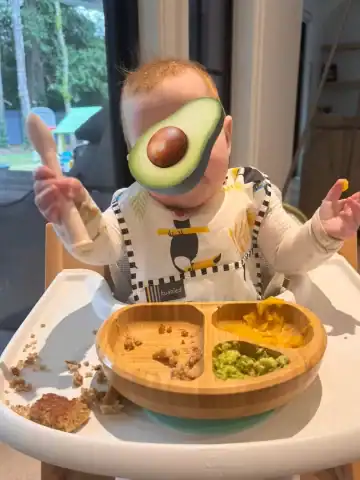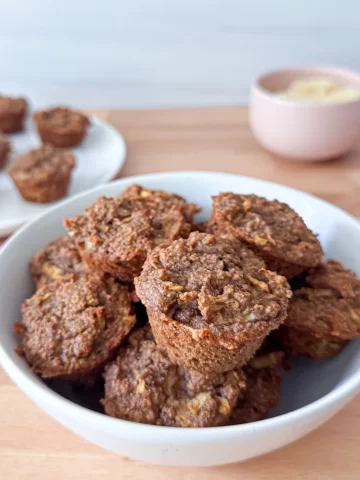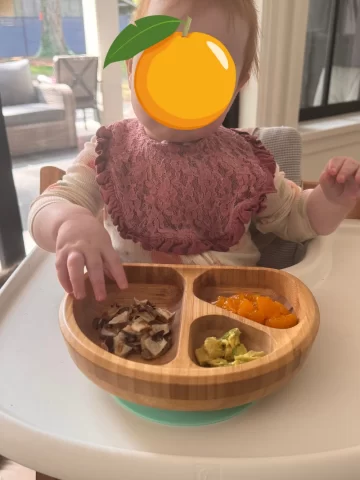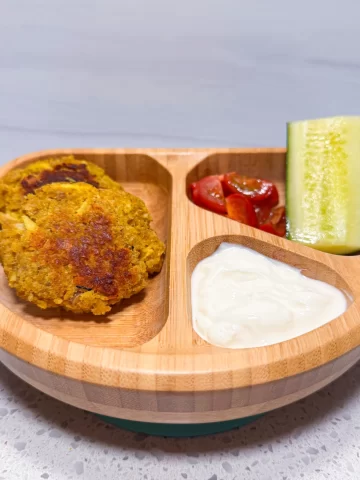If you’re looking for the 10 best first foods for Baby-Led Weaning at 6 months, you’re in the right place. Around six months is typically when babies start showing signs that they’re ready to try solids. If you’re not sure whether your little one is quite there yet, I have a full guide on starting solids linked here and signs to look for.
Each food below comes with tips on how to prepare it safely, making sure it’s soft, squishy, and easy for baby to grab. Although there are lots of amazing first foods, these are some of our favourites because they are easy to prepare and modify, and I can whip them up fairly quickly for baby.
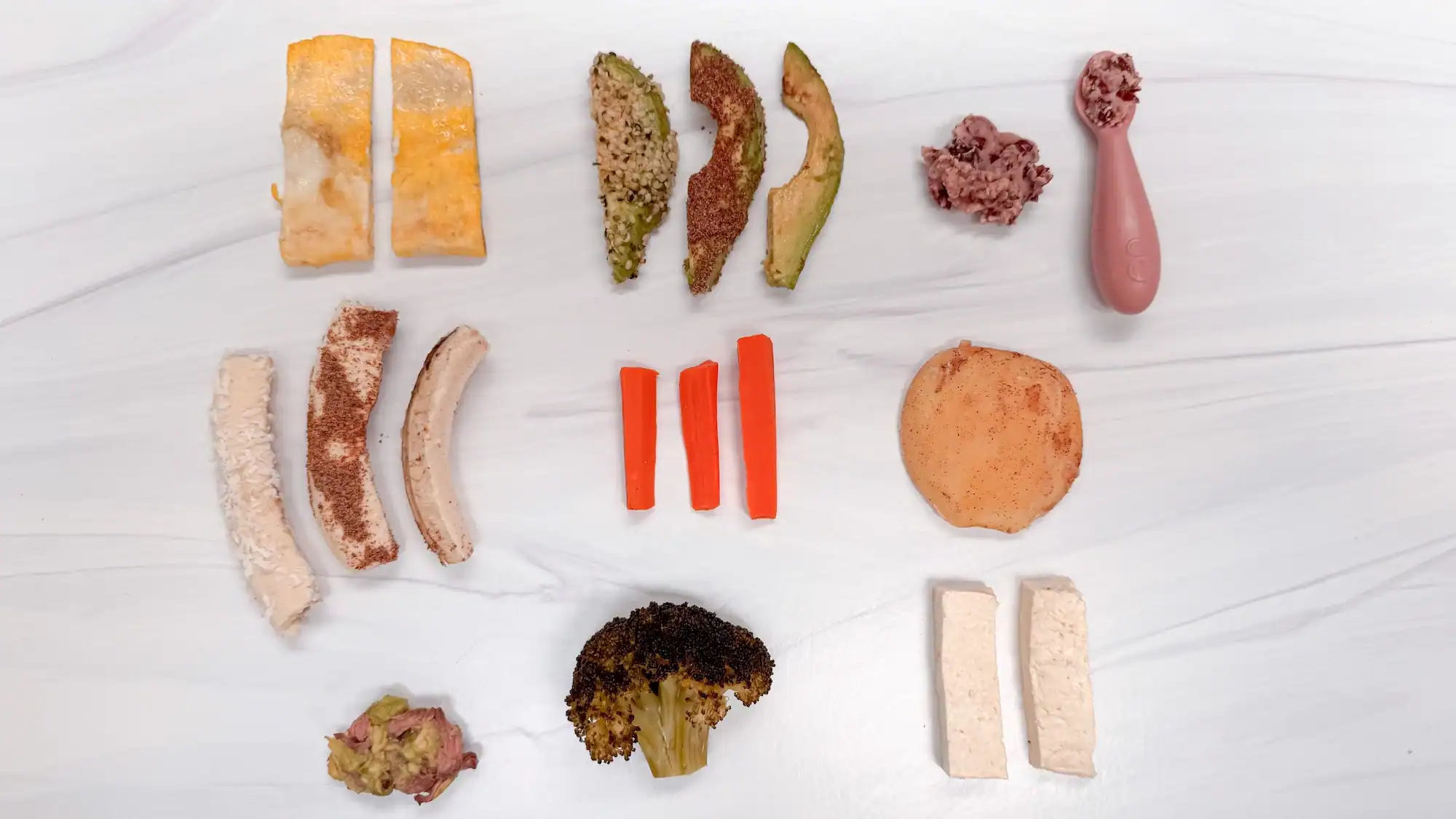
Save this recipe!
Table of contents
Our Experience with Starting Solids
I remember feeling so excited to start solids with both of my girls, and then suddenly, totally overwhelmed. Even as a dietitian who knew the research and the guidelines, it still felt tricky when it was my own baby!
Both of my girls were slow to take to solids at first, which made it feel even more challenging at the time. In hindsight, it was such a good reminder for myself that just because a baby turns 6 months, it doesn’t automatically mean they’re ready. Some babies might be ready a little earlier, some a little later, and that’s completely okay. For a list of developmental signs that your little one is ready to start solids, check out these guidelines here. AND just a note, even though my daughter was showing signs of readiness to start solids, it still took her a while to actually want to try the food!
Here is a glimpse into our experience – you will see that my daughter just didn’t have interest in food for a while! And of course in baby time, 2-3 weeks feels sooo long! But she really started to get interested closer to 7 months.

As a registered dietitian and a mom, I want to help you feel more confident in your baby’s first foods. These options below are some of my favourites that not only are nutritious and developmentally appropriate for most 6-month-olds, they also help your baby build foundational feeding skills. And if you’re looking for a full breakdown on starting solids, check out my blog post here!
Just a note, although I am a registered dietitian, every baby and family is unique, and this information is not personalized. Please always consult your child’s healthcare provider for specific feeding advice or reach out and book a one-on-one session!
What Is Baby-Led Weaning and Is It Right for My Baby?
First let’s just make sure we are on the same page with regards to what baby-led weaning means. Baby-led weaning is an approach that involves offering your baby whole pieces of food (that are appropriately modified!) from the start and they self-feed themselves, rather than being spoon-fed purees. It emphasizes baby’s autonomy at mealtimes, helps build oral motor skills, and encourages a positive relationship with food.
That said, it doesn’t have to be all or nothing!
Many families thrive with a combined approach (we sure did!). This is where self-feeding with soft finger foods is paired with purees (often pre-loaded spoons that baby brings to their mouth). This hybrid style still supports independence and exposure to textures while giving you some peace of mind.
The key is this: Baby takes the lead. Whether with whole foods or purees, the goal is to honour your baby’s hunger cues, curiosity, and readiness to engage with food at their own pace.
What to Look for When Offering First Foods to Baby
At 6 months, your baby’s nutritional needs begin to shift. Here’s what to prioritize:
Iron: Iron stores from birth begin to drop around 6 months, so incorporating iron-rich foods as part of baby’s first meals is very important. Think soft meats, fish, lentils, and iron-fortified grains. For more information on iron, and to see how much your child needs, check out this blog post here.
Healthy Fats: Fat is essential for brain development. Avocado, hemp hearts, and whole eggs are great choices.
Variety: Introducing different flavours and textures early may help babies become more adventurous eaters and supports oral motor skills.
Allergen Introduction: Introducing common allergens like egg, dairy, wheat, and peanut early and often is now recommended to help reduce allergy risk. Offer these in safe, age-appropriate forms.
Texture & Size Guidelines for Baby Led Weaning
Keeping feeding safe and developmentally appropriate is key:
- Texture: Food should be soft enough to mash easily between your fingers.
- Shape: Offer food in finger-length pieces, about the size of your pinky, so baby can grasp it with their whole hand (palmar grasp).
- Avoid: Hard, round, sticky, or crunchy foods like raw apple, whole grapes, popcorn, and globs of nut butter.
- No Teeth Needed: Babies don’t need teeth to chew—gums are strong! Focus on softness and shape over “chewability.”
10 Best First Foods for Baby-Led Weaning at 6 Months
You will see below these foods are shown individually. In the early days you may just introduce one or two foods at a time, and then will begin to build out a balanced baby plate with a high iron food, a high energy food, and some colour.
1. Avocado Spears (Coated in Ground Flax or Hemp Hearts)
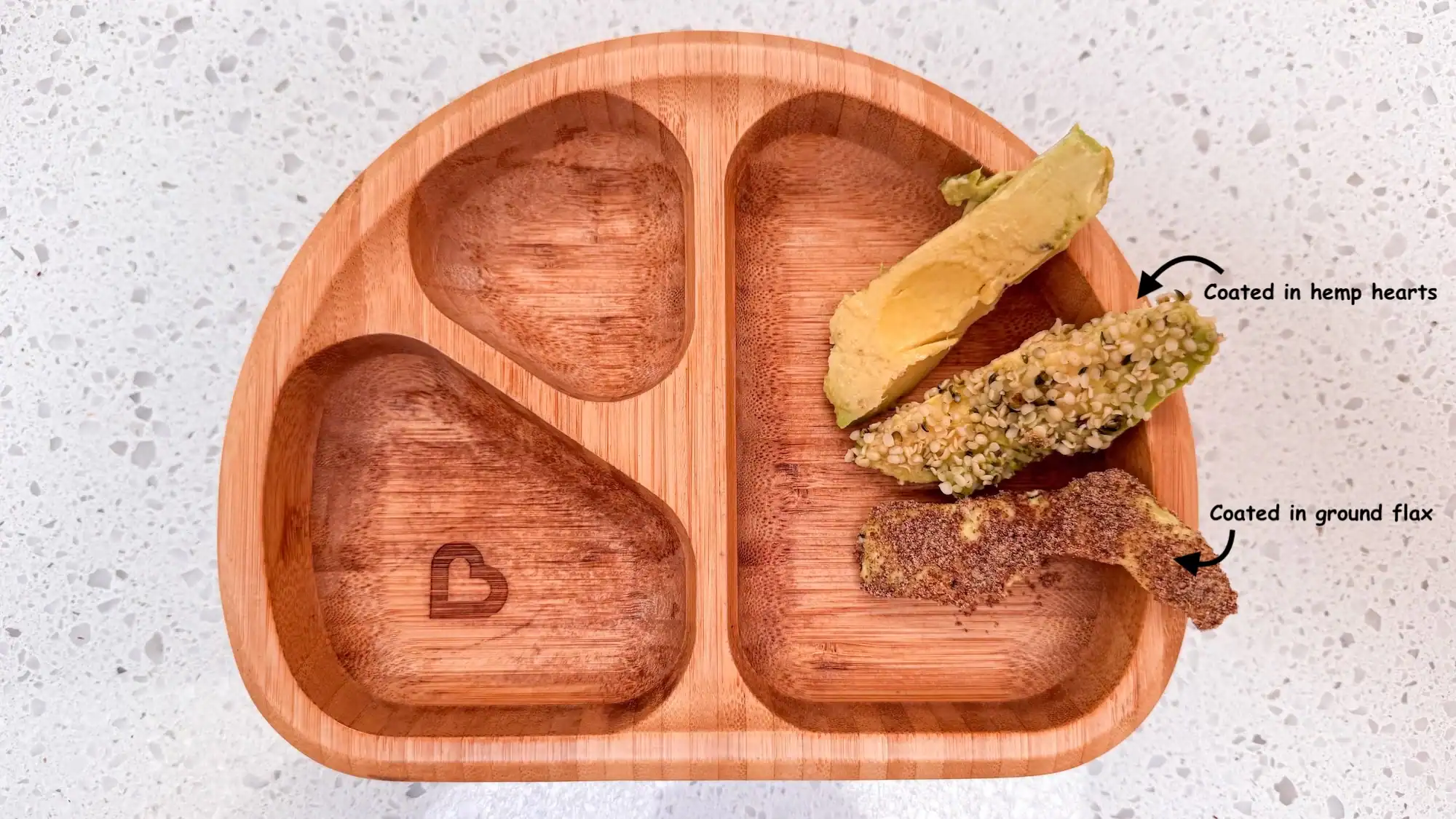
Avocados are my go-to first food. They’re soft, full of healthy fats, and have a naturally creamy texture. Cut into thick spears and you can roll in ground flax or hemp hearts to make them less slippery and add a boost of omega-3s. You can also mash and pre-load onto a spoon.
2. Mashed Beans
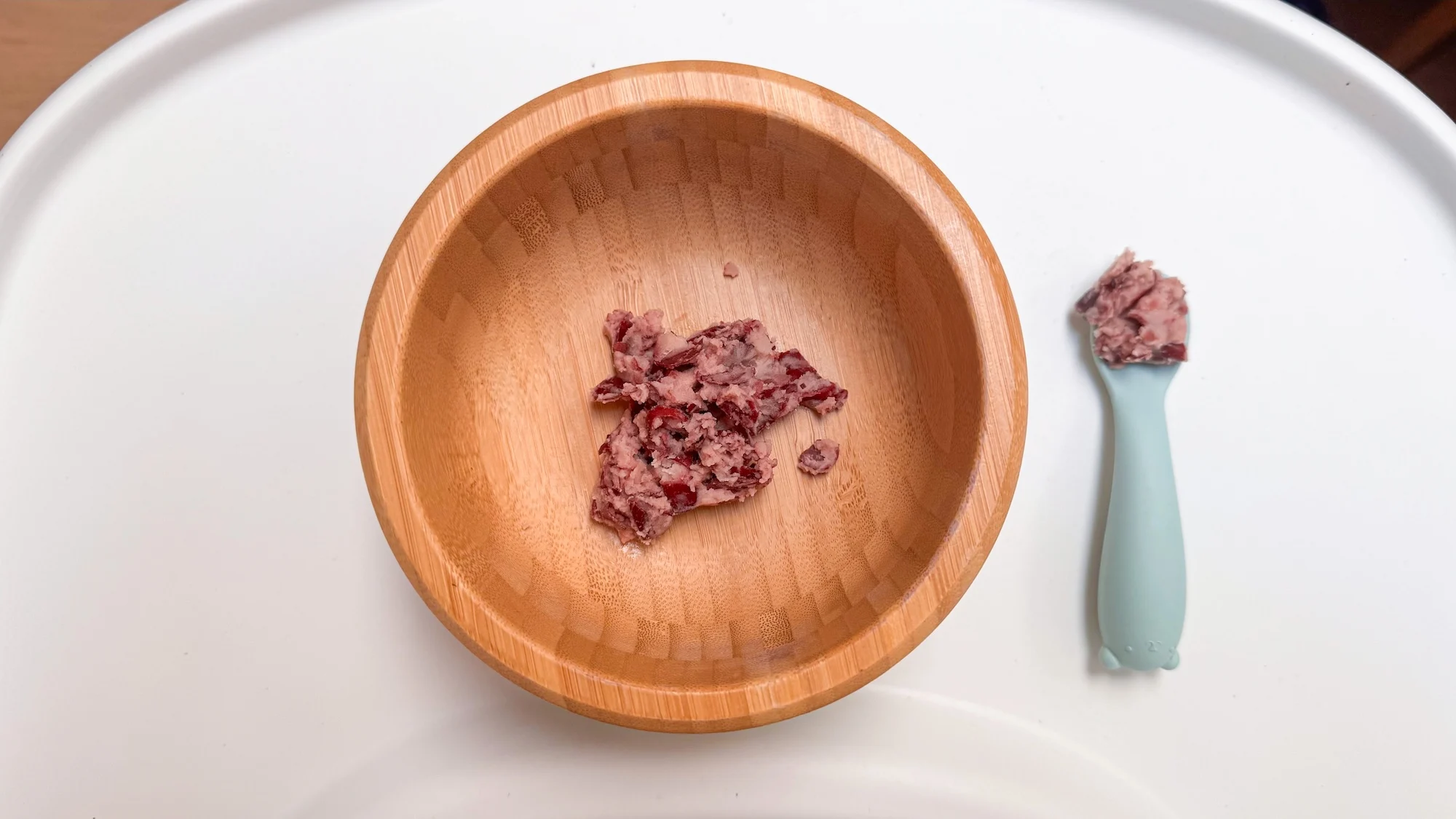
Beans are perfect for little ones just starting solids as they are a great plant-based source of iron. Mash them with a fork for baby to scoop with their hands, preload onto a spoon, or spread on a toast strip. Pair with a bit of vitamin C, such as a squeeze of orange, strawberry (served as a large whole strawberry or mashed), or steamed bell peppers to help boost iron absorption.
3. Steamed Cinnamon Apple Halves
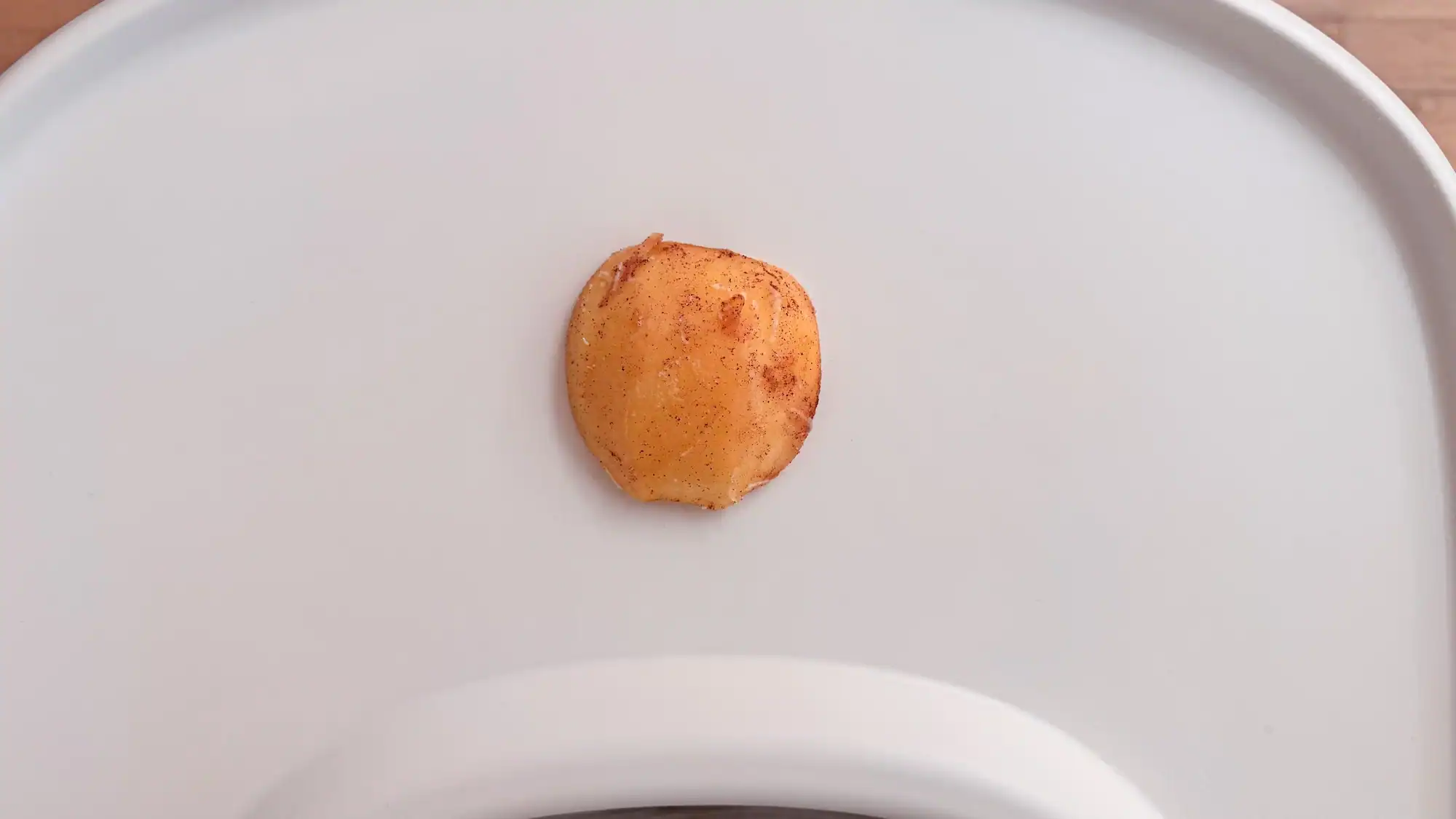
Slice apples in half, remove core and peel, and steam until fork-tender (~15minutes). I love adding a little cinnamon or nutmeg to introduce flavour variety early on.
4. Steamed Broccoli Florets
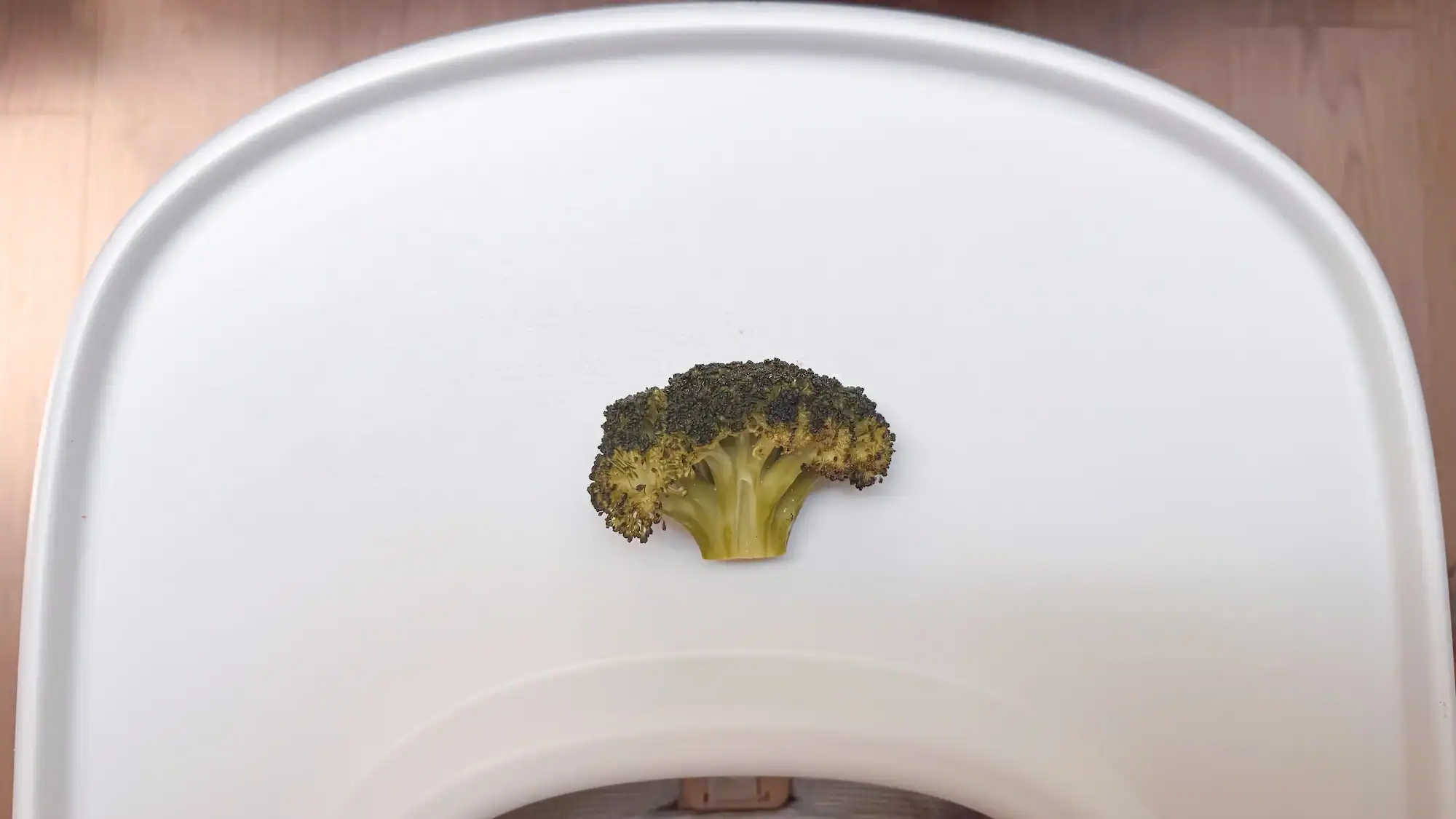
Yes, broccoli! Steam until very soft and cut into large florets. The stalk acts as a handle, and the tops offer fun texture. Bonus: some research suggests exposing babies to bitter veggies early may help support their curiosity with these foods later on.
5. Banana Spears (with Coconut, ground flax or cereal coating)
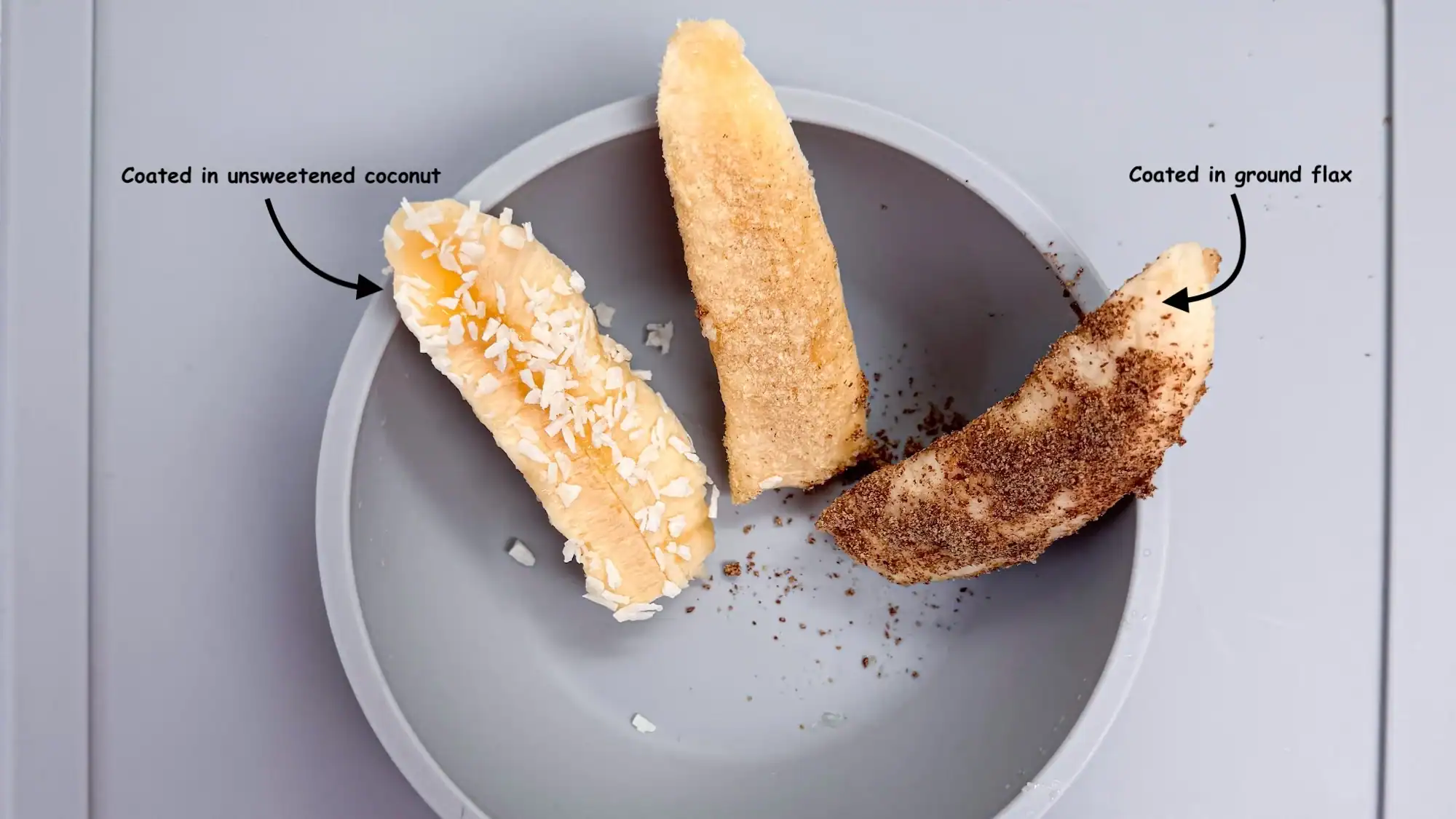
Bananas are a great first food. They are naturally sweet and easy to mash with gums. Slice lengthwise into thirds or in halves with part of the peel removed for grip. Coat with finely shredded coconut, ground flax, or iron-fortified baby oat cereal to reduce slipperiness. You can also mash and serve on a spoon.
Here is a video of a super easy way to slice the banana into spears!
6. Soft-Cooked Carrot Sticks
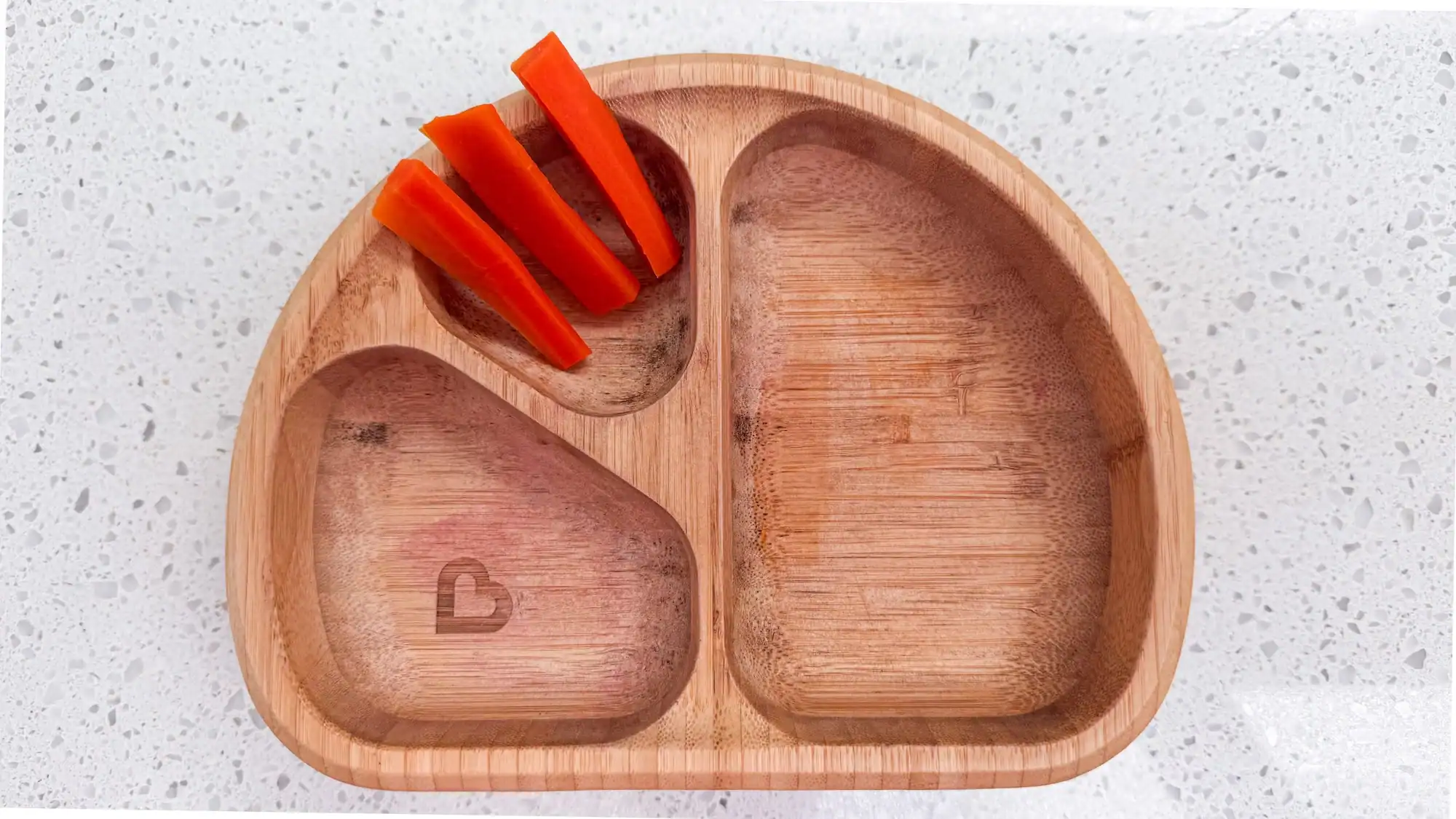
Steam carrots until very soft, then slice into finger-length sticks. Carrots are high in beta-carotene and offer a mild, sweet flavour.
7. Omelet Strips

Eggs are a top allergen we want to introduce early. Make a plain omelet, slice into strips, and serve. In the picture above, I served it with some mashed avocado and a steamed apple half.
📣 Top Tip: Eggs contain non-heme iron, which the body doesn’t absorb as easily as heme iron (found in animal foods). To help with absorption of non-heme iron, pair some vitamin C rich foods such as diced spinach mixed into the omelette, or strawberries on the side (served either as a big ripe strawberry or mashed), or mashed kiwi.
8. Roasted Sweet Potato (Plus Pro Tip!)
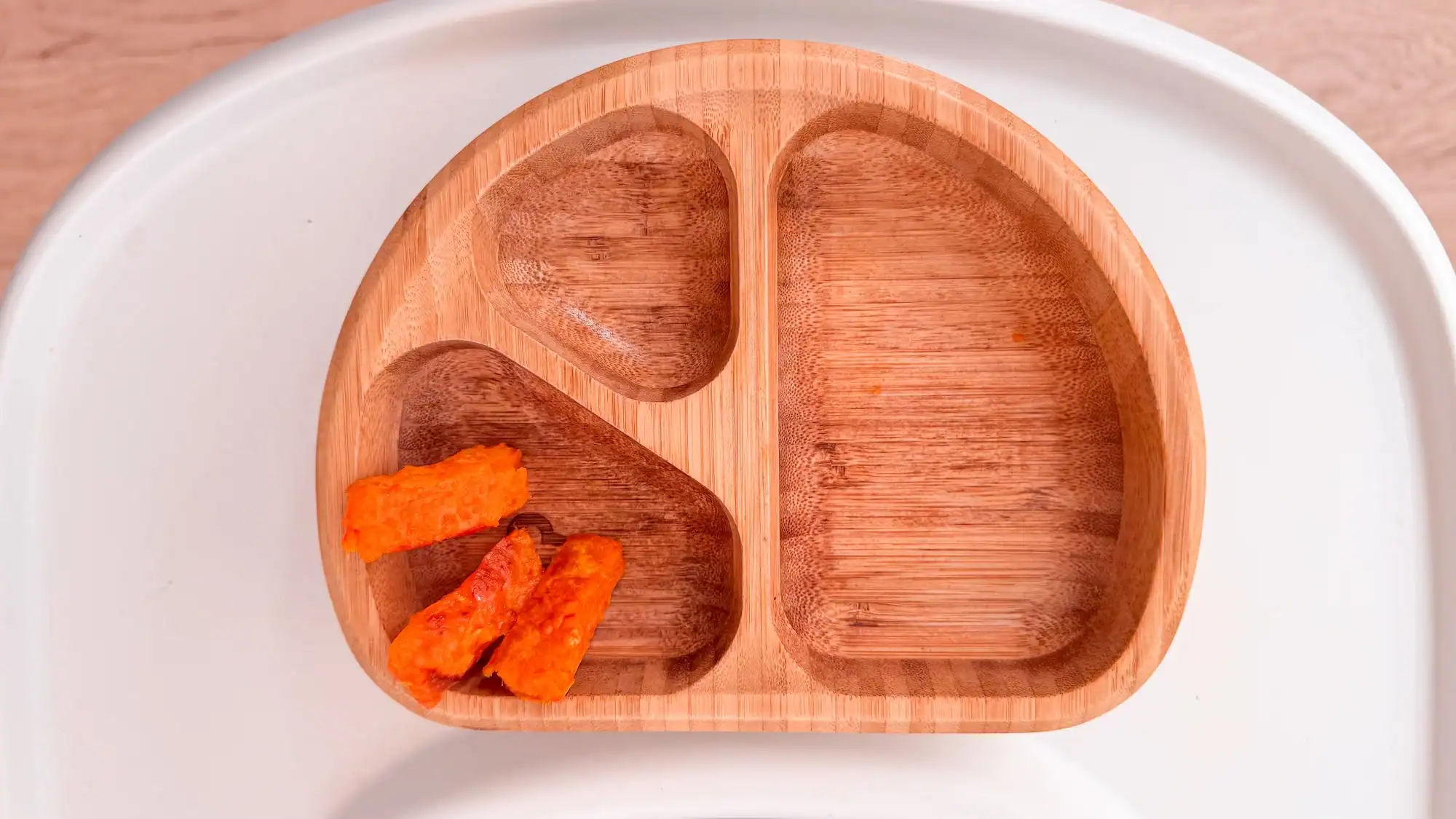
Sweet potatoes are a great source of vitamin A and have a soft, mashable texture when cooked properly.
📣 Pro Tip: After peeling, slice into thick rounds and roast. This method keeps them soft throughout, whereas thinner fry-shaped cuts tend to crisp up on the edges and can become too firm for new eaters.
9. Tofu Fingers
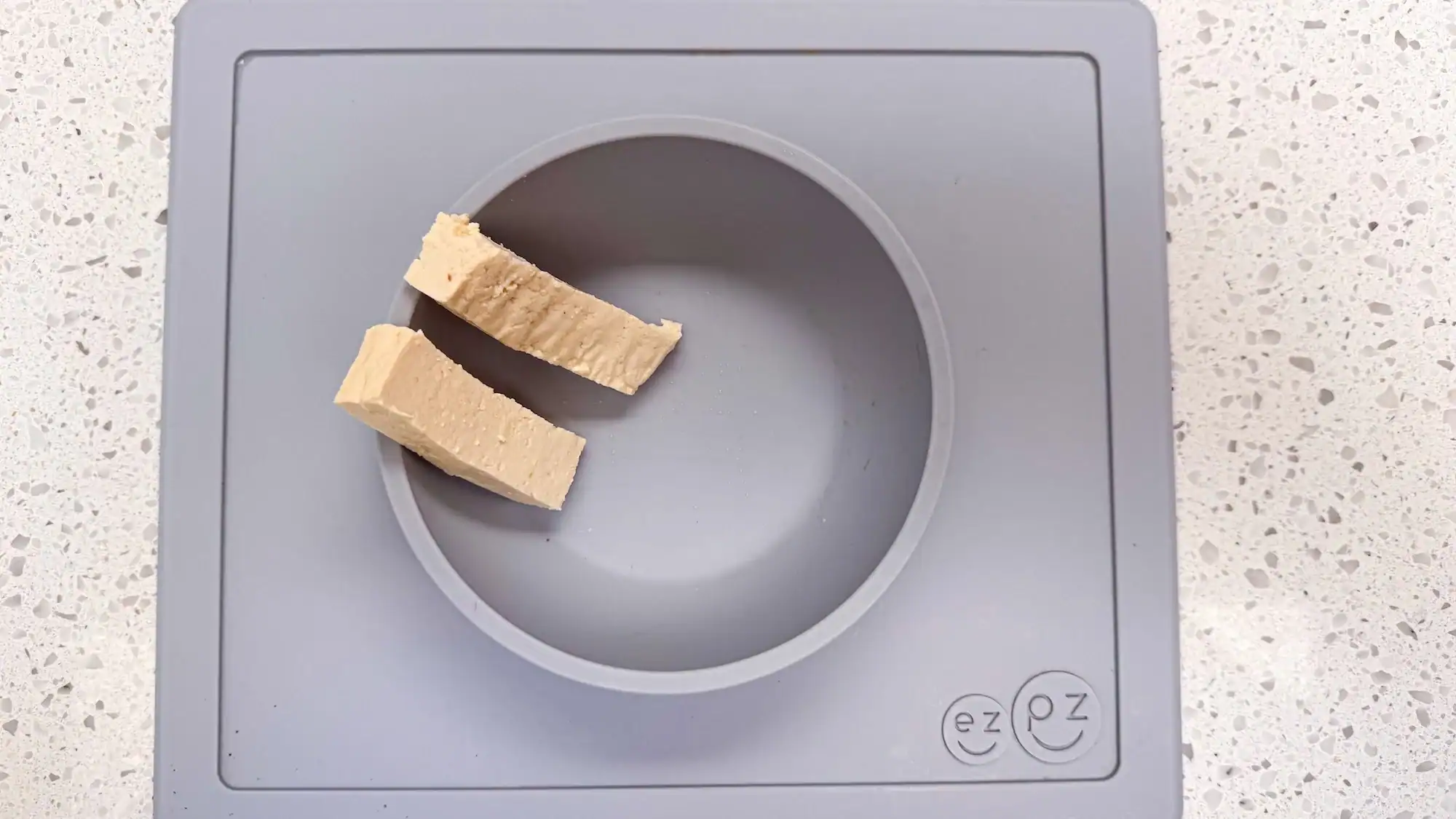
Tofu is an underrated first food! Soft tofu is a great texture that can be mixed into other foods or eaten on its own. Tofu is made from soy, which is a top allergen. The current research supports introducing allergens such as tofu early and often! Firm tofu can be offered in strips, just ensure it is squishable between your fingers.
Tofu is another food that contains non-heme iron, so pair with some vitamin C such as orange (here are tips on how to serve oranges safely to a baby), or some cooked bell pepper.
10. Shredded Chicken (Mashed Into Veggies)
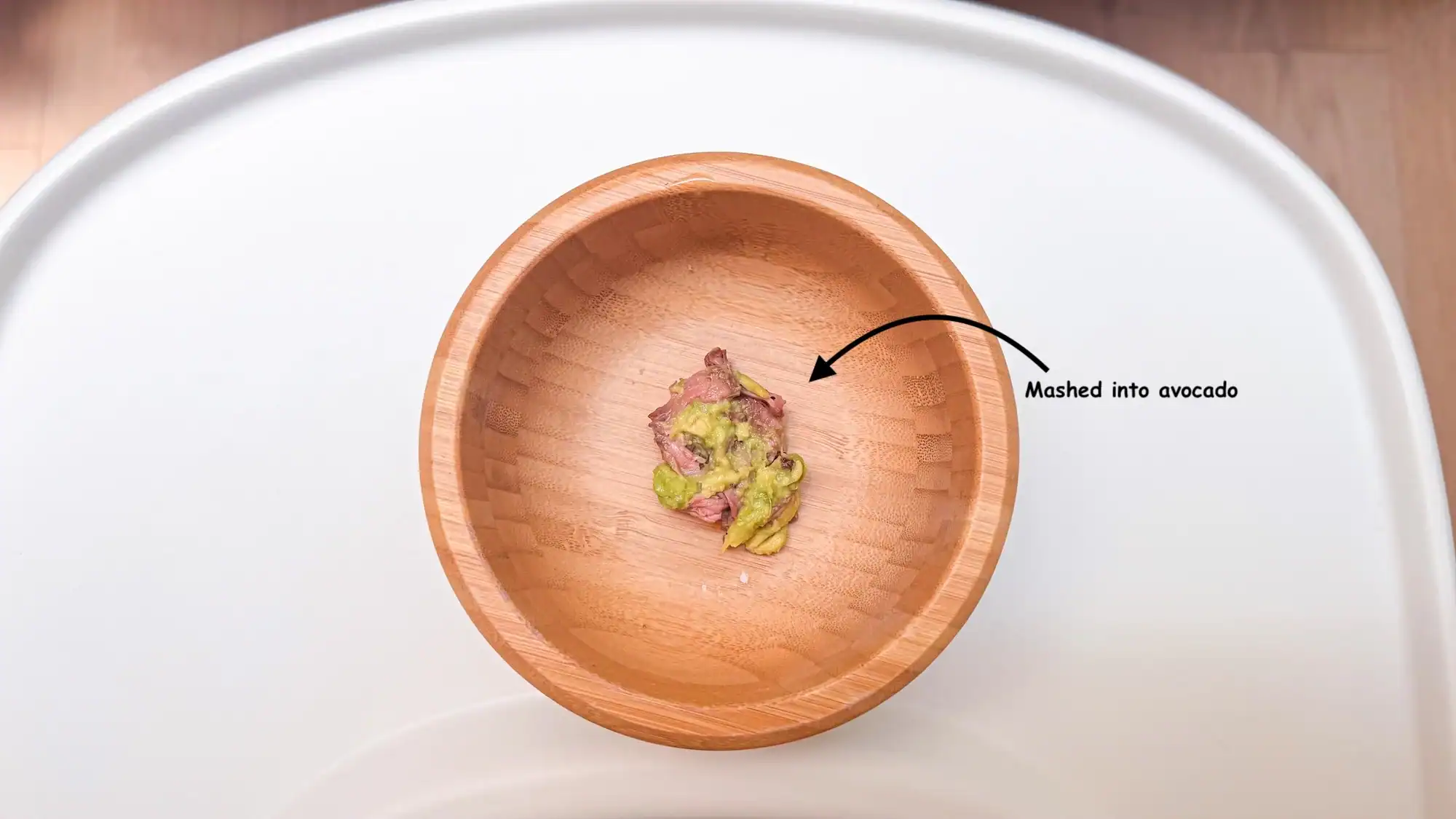
Chicken is a great source of heme iron, which is better absorbed by the body compared to plant-based iron. Shred chicken into fine pieces. Mix into soft mashed veggies or avocado to make it easier for baby to pick up and eat.
These ten foods are simple, nutritious, and perfect for helping your baby explore new tastes and textures. Start slow, follow your baby’s lead, and enjoy the messy, mealtime moments along the way!

